This is going to be a bit longer than usual… What to say about Kay Sutton? Let’s take the indirect route. Women in Hollywood are a great indicator of the prevalent mind-set of the time, with regards to women and work. I understand that a large number of women who landed in Tinsel Town in the 1930s actually wanted to either get married well or simply to have fun. There is nothing wrong about this – to each his own, and it’s almost moronic and incredibly naive to think that only die-hard artists went to Hollywood to make art. Yet, what often irks me is when a woman openly declares she does it “for the art”, enjoys acting, that’s it’s more than a meal ticket for her – and then puff, two months later, and she is married and retired. The culture of blatantly lying to the press and using it as a tool for more popularity is nothing new in Hollywood – it’s been around from the very start, in fact. I am very ambivalent about Kay in this regard. She was an above average beauty, even for high Hollywood standards. She seemed like the sort who decided to act because she really liked it and wanted to carve her way in the field, which is great. Then she got married, left movies, divorced and returned to movies.
Okay, so she may have wrongly estimated her former husband, may have been dismayed by the reality of marriage and after getting burned, returned to work. Nothing to chide her about, its normal human behaviour to learn and change your plans as you go. During this time, she lamented in the press how she wants to have a career and that movies and marriage don’t mix. Okay, this makes perfect sense for sure, as a number of top actresses were never married for this very reason. BUT, after a few short years, she gets married and puff puff, she’s off again (this time for good)! Who is she kidding here? Why all the laments then when you were ready to throw it all away at the very mention of repeated matrimony?
The fact is, perhaps I am too harsh at the girl – if you watch her movies, it’s clear she was not a talented actress and had little to recommend herself except her beauty. It was a very big dilemma if she could have even survived in Tinsel Town for a long time. Then again, if she wanted to be a serious actress, why didn’t she work on it, why didn’t she take lessons? Oh, I give up! At least I think she did well for herself, all things accounted for…
EARLY LIFE
Katherine Warburton Sutton was born on June 14, 1915, in Irvington, New Yersey, to and William Warburton Sutton and Katherine Rutan Neumann. Both of her parents were from well off, higher middle class families. Sadly, the divorced when she was very young.
When she was about 4 years old, she was sent to live with her maternal grandmother in New York, where she attended elementary and high school. Due to her vivacious nature she was nicknamed Sunny. Kay planned to be a newspaper woman and studies journalism, but was pushed into acting by friend who tough she was just the right type for Tinsel Town. Kay liked the idea, and, determined to succeed at it, she went to Hollywood in the early 1930s.
CARRER
Kay started her career getting uncredited bit parts in a string of well-known movies: first Roberta, the first pairing of Ginger Rogers and Fred Astaire (with Irene Dunne and Randolph Scott as the other romantic couple – and yes, it works), then the very good Jean Harlow vechicle Reckless,bland and forgettable musical Old Man Rhythm, Rogers/Astaire movie (without Irene Dunne) Follow the Fleet, and ending it with the superb A Star Is Born (gotta love Frederic March!!). It seemed that Kay was on a very good path to some semblance of stardom.However, she retired to marry cameraman Edward Cronjager. The retirement was of short duration, and she returned to movies in late 1937, and by early 1938 was working in her full capacity.
Night Spot is a pedestrian RKO one hour feature, about the night club racket, with Joan Woodbury and Allen Lane in the leads. Nothing to write home about. This Marriage Business was no better, another RKO quickie. It’s about a judge that had a spotless marriage registrar record – none of the people he married ever divorced.Throw in corrupt city mobsters and a budding young newspaper man, and you’ve got a hot mess. At least the underrated Victor Moore gets his time and place to be funny (something he was very good at).
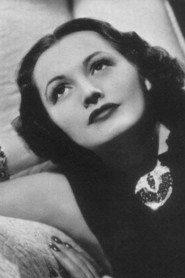 Kay was cast in a better movie when she appeared in Vivacious Lady, is an aptly named comedy, well written, well-directed and well acted. The storyline is simple (a college professor marries a chorus girl on a whim and later has difficulties admitting it to his parents) but you do’t need much more when you’ve god James Stewart and Ginger Rogers in the leads. They don’t make them like this anymore, it’s a true non complex movie with no big pretensions and lots of soul.
Kay was cast in a better movie when she appeared in Vivacious Lady, is an aptly named comedy, well written, well-directed and well acted. The storyline is simple (a college professor marries a chorus girl on a whim and later has difficulties admitting it to his parents) but you do’t need much more when you’ve god James Stewart and Ginger Rogers in the leads. They don’t make them like this anymore, it’s a true non complex movie with no big pretensions and lots of soul.
The Saint in New York was Kay’s first starring role. It’s the first of the Saint movies made by RKO in the 1930s and 1940s. Louis Hayward plays the hero – or the anti hero to be precise. We all know that with the establishing of the production code, much of the freedom of scriptwriters of Hollywood simply went out of the window. Movies often became predictable and insipid. However, a well versed writer and director could show, or hint, things that could not be said or shown on the screen. While this is not a movie of subtlety, Templar is a surprisingly dark hero, not averse to using less than noble ways to achieve his goals. While he is basically trying to do a good thing – rid New York of a band of hard-core mobsters – the way he does it makes him no better than the guys he hunts down. He plots and kills mercilessly. I have to say, I was surprised by this, and it’s a nice surprise more than anything else. To see a hero fighting crime – a hero who is not your typical boy next door, a hard-boiled cop or a graceless mobster – perfect! Hayward is superb in the role. I have a soft spot for the guy – he’s an incredible mixture of elegance and menace. Sadly, it is more than visible here that our Kay, despite all her beauty, was not a great actress. She was okay, but had neither the charisma nor the acting skill to get on top. But all in one, to say about the movie: Recommended!
 Kay had an uncredited bit in Having Wonderful Time, a cute, fluffy but plot thin comedy with Ginger Rogers and Douglas Fairbanks. Kay played a prominent role in I’m from the City, a Joe Penner low-budget comedy. If you like the Three Stooges, it’s a good comedy. If you don’t like them, it’s nothing more than an idiotic movie. Well, to each his own! Kay continued playing supporting roles. She was in Smashing the Rackets, a pretty decent movie about corruption in the district attorney’s office with Chester Morris in the lead and with the ever suave Bruce Cabot (in one of his better roles) as the bad guy.
Kay had an uncredited bit in Having Wonderful Time, a cute, fluffy but plot thin comedy with Ginger Rogers and Douglas Fairbanks. Kay played a prominent role in I’m from the City, a Joe Penner low-budget comedy. If you like the Three Stooges, it’s a good comedy. If you don’t like them, it’s nothing more than an idiotic movie. Well, to each his own! Kay continued playing supporting roles. She was in Smashing the Rackets, a pretty decent movie about corruption in the district attorney’s office with Chester Morris in the lead and with the ever suave Bruce Cabot (in one of his better roles) as the bad guy.
A good thing of being a contractee of RKO’s in the late 1930s was the chance to appear in one of the Ginger Rogers/Fred Astaire movies. While not her first Astaire/Rogers movie, Kay had the honour of appearing in Carefree. What can I say, it’s a Rogers/Astaire musical, and we all know what that means. It’s a big plus of Kay’s filmography if nothing else. She continued to appear with prestigious stars – in The Mad Miss Manton she plays opposite Barbara Stanwyck, one of the best actresses ever to grace Hollywood. It’s a madcap and sharply written comedy, nothing more, nothing less.
Then, came the moment I dread to see in any actresses career – the moment she ventured into low budget western territory. When the horse is billed about you, you know it’s time to go! Kay’s foray into the wonderful world was Lawless Valley, opposite George O’Brien. The less I say about these movies the better, most fo you already know I’m far from being a fan of the genre. Beauty for the Asking is one fo the “serious Lucille Ball movies”, where Lucille was miles apart from the scatter brained housewife everybody came to live during the 1950s. The plot, while predictable, deals with a topic close to my own heart – a woman trying to do good in business in the 1930s. It’s inspirational stuff if nothing else, and there’s also Frieda Inescort, one of the most royal and regal actresses ever to grace the screen. Twelve Crowded Hours is a typical B plot boiler fo the time, with Richard Dix in lead, as a newspaperman trying to avenge a killed co-worker. Of course he was killed by a heartless mobster, and Dix goes on an tries to steal from the mobster and then he… Blah blah blah blah. You get the picture.
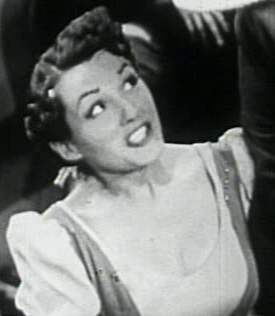 Not long after Kay appeared in her fourth Roger/Astaire movie, The Story of Vernon and Irene Castle. She played the lead feminine role in S.O.S. Tidal Wave, what is probably a bad movie (listen to the plot, as one reviewer wrote in IMDB – The plot was pretty thin but still memorable for me. Suppose the mob wants to spoil the election and arranges for every station in town to play a live documentary or newscast about the tidal wave hitting New York. Everyone would be glued to the TV box and forget to go vote. Thus the ward bosses get out to vote against the mayor, district attorney? Whoever. Somebody with some alertness realized that a building which had gone down was still transmitting stock news on the ticker. Whoa, call New York, confirm,get the voters out.) Yeah, imagine, they made a movie out of it! No comment!
Not long after Kay appeared in her fourth Roger/Astaire movie, The Story of Vernon and Irene Castle. She played the lead feminine role in S.O.S. Tidal Wave, what is probably a bad movie (listen to the plot, as one reviewer wrote in IMDB – The plot was pretty thin but still memorable for me. Suppose the mob wants to spoil the election and arranges for every station in town to play a live documentary or newscast about the tidal wave hitting New York. Everyone would be glued to the TV box and forget to go vote. Thus the ward bosses get out to vote against the mayor, district attorney? Whoever. Somebody with some alertness realized that a building which had gone down was still transmitting stock news on the ticker. Whoa, call New York, confirm,get the voters out.) Yeah, imagine, they made a movie out of it! No comment!
Kay was again uncredited in Call a Messenger, a minor movie about a reformed youth. She was credited in The Man from Montreal, but it’s another insipid potboiler. Finally something better came her way with Balalaika, a nicely done Nelson Eddy/Ilona Massey musical. Nelson is a wooden actor, no doubt about that, but Ilona is a passionate woman and pretty good in her role. The director, set design and cinematography are all first class.
Kay appeared in The Man Who Talked Too Much, a movie version of the well known play Mouthpiece (about a district attorney who sends the wrong man to jail, becomes an alcoholic because of it, and then tries to turn his life around), but her scenes were later all deleted. The movie was later remade with Edward G. Robinson, and that movie, Illegal,is much better known. Kay was billed in Laughing at Danger, but the movie is almost considered lost and I have nothing to write about it.
Sky Murder was the last of the Nick Carter, Detective movies, and a pretty good one at that. Walter Pidgeon was superb as Nick, and had one of the best sidekicks in the business, played by Donald Meek. Next came Li’l Abner, a movie based on comic by Al Capp, about the citizen of Dogpatch. Yep, you have three guesses to try and nail down Dogpatch on the map 🙂 The later version, from the 1960s, is better known, and this one made no impact on anyone involved. Scratch and let’s move on.
Kay played a miniscule role in The Bank Dick, one of W.C. Field’s best (and best known) movies. Then came A Night at Earl Carroll’s, a movie with a truly moronic plot (mobsters trying top make Earl Carroll look bad so he’ll go bankrupt?) but lots of showgirls (what else can you expect from a movie with Earl Carrol in the name?). Maisie Was a Lady is the third in the ten movies about brassy showgirl Maisie Revier, played to perfection by Ann Sothern (she truly was the right type of actress for the role). The story is pure fluff, but the supports are wonderful, including Lew Ayres and the extremely sweet Maureen O’Sullivan.
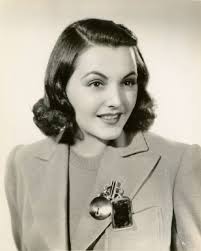 You’re Out of Luck was the movie where Kay finally played another female lead. It’s one of the bunch of movies Frankie Darro and Mantan Moreland made, always playing best friend who get mixed up in all the wrong stuff. While not high art, there actually decent efforts and worth watching. The Trial of Mary Dugan is a little seen, almost forgotten remake of the better known Norma Shearer movie. Mary is played by Laraine Day, an actress I highly admire, but this one hasn’t got any good notices so scrap. Kay continued her string of uncredited performances with Sunny – it’s is a charming musical that gets totally bogged down by an absence of any coherent plot. Poor circus girl falls in love with a wealthy young man but his family disapproves… With a happy ending of course… Things just starts to drag and go nowhere and that’s about it. It is one of the few movies that British superstar Anna Neagle made in the US, so at least it’s not a complete no name movie…
You’re Out of Luck was the movie where Kay finally played another female lead. It’s one of the bunch of movies Frankie Darro and Mantan Moreland made, always playing best friend who get mixed up in all the wrong stuff. While not high art, there actually decent efforts and worth watching. The Trial of Mary Dugan is a little seen, almost forgotten remake of the better known Norma Shearer movie. Mary is played by Laraine Day, an actress I highly admire, but this one hasn’t got any good notices so scrap. Kay continued her string of uncredited performances with Sunny – it’s is a charming musical that gets totally bogged down by an absence of any coherent plot. Poor circus girl falls in love with a wealthy young man but his family disapproves… With a happy ending of course… Things just starts to drag and go nowhere and that’s about it. It is one of the few movies that British superstar Anna Neagle made in the US, so at least it’s not a complete no name movie…
Sergeant York is a well known movie, one of the most famous ones Kay appeared in. Her role is uncredited, but hey, at least she was in the same movie as Gary Cooper! Kay ended her RKO contract with Flying Blind, a dismal effort at best. With a stupid story (spies from nowhere steal a plane and crash land it in the jungle, and out heroes have to survive all that, imagine!), below average acting and generally dull pacing, it’s, quite frankly, a bad movie. There are worse to be sure, but also much, much better.
In 1941, Kay married her second husband, moved to Hawaii with him and left movies for good.
PRIVATE LIFE
Kay was 5’6” tall, weighted 120 pounds, had to do sports to maintain her figure and was a book lover.
Kay entered the scene in 1935. In August 1935, it was announced she would marry Ed Conjager, Hollywood cameraman, in September. She promised she would leave the screen after the marriage.
Kay married Edward Conjager on September 16, 1935, in Los Angeles. They went on a honeymoon the next day. Edward was born on March 21, 1904, in New York City, to Charles Cronjager and Mary Kenney. He worked as a cinematographer in Hollywood from 1925.
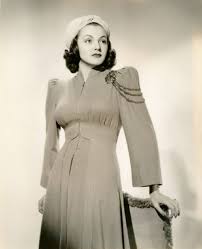 IMDB claims their marriage lasted for just two days, but this is not true for sure. Kay and Ed stayed married for almost two years, separating in May 1937 and divorcing in August 1937. Kay lamented to the newspapers “what’s the use of having a husband when you never see him” and blamed their career on keeping them apart. She then claimed that a woman cannot have a husband and a career, and that she would much rather take her career over matrimony. She won her divorce by saying that Edward called her a “lousy housewife”. Kay resumed her career after the divorce.
IMDB claims their marriage lasted for just two days, but this is not true for sure. Kay and Ed stayed married for almost two years, separating in May 1937 and divorcing in August 1937. Kay lamented to the newspapers “what’s the use of having a husband when you never see him” and blamed their career on keeping them apart. She then claimed that a woman cannot have a husband and a career, and that she would much rather take her career over matrimony. She won her divorce by saying that Edward called her a “lousy housewife”. Kay resumed her career after the divorce.
Cronjager went on to marry starlet Yvette Bentley in August 1942. His only child, Loretta Arele, was born on November 25, 1950. Sadly, Edward died on June 15, 1960 in Hollywood.
Kay wasted no time in finding a new beau. She dated Walter Kane, Howard Hughes right hand man, in August 1937, even before her marriage was officially terminated. They lasted until late in the year.
Kay started 1938 by dating Alfred Gwynne Vanderbilt, a good catch on all accounts (except the looks maybe). But we all know that Al dated al the actresses, but in the end married only girls his own class (he married Manuela Hudson, a West Coast socialite, not long after)! I hope the actresses he dated knew they (probably) never had a chance. In November 1938, she was dating Joseph Hoenig, an investment broker. In early 1941, she dated Vic Orsatti (I repeat – who didn’t date Vic at that time and place?). Unusual for Orsatti, they lasted for a couple of months. She also revealed to the papers that she wore a round medallion of chased antique gold set with diamonds and rubies, suspended with an intricate golden chain.
In January 1941, she was seen with Carlos Barbe, noted Uruguay diplomat, then serving as a vice consul. Then, in March 1941, it was back to Vanderbilt, who was married at that time but separated from his wife Manuela. In April 1941, Kay was named the most beautiful brunette in Hollywood, beating the likes of Dolores Del Rio, Hedy Lamarr, Vivien Leigh and Joan Bennett, among others. Wally Westmore, the leading make up artist in Paramount, told the press how Kay combines a classically beautiful face with stunning body proportions and wonderful coloring. Kay sure was beautiful but can’t match, by along shot, the popularity of other brunette actresses mentioned here. In May 1941, she was dating Gene Markey the scriptwriter who married a string of stunning brunette actresses – Hedy Lamarr, Joan Bennett, Myrna Loy. Now tell me that Kay wasn’t his type!
 By June she was dating Townsed Netcher, the department stone tycoon, and by July he was replaced by Nils Ashter, the handsome Danish silent movie star. The papers were at it, just how hot hot they were. Then, Kay surprised everybody by marrying Clifton Stokes Weaver, Honolulu restaurant director and sugar plantation owner. They met in April in Hawaii, dated briefly before she went back to Los Angeles and then lost touch for a while. He visited Los Angeles in June, called Kay to see how she was doing, and the rest is history! They eloped to Juma, Arizona, in early July, 1941. On a side note, Kay dated Nils almost to the day she got married. Well, that’s Hollywood for you!
By June she was dating Townsed Netcher, the department stone tycoon, and by July he was replaced by Nils Ashter, the handsome Danish silent movie star. The papers were at it, just how hot hot they were. Then, Kay surprised everybody by marrying Clifton Stokes Weaver, Honolulu restaurant director and sugar plantation owner. They met in April in Hawaii, dated briefly before she went back to Los Angeles and then lost touch for a while. He visited Los Angeles in June, called Kay to see how she was doing, and the rest is history! They eloped to Juma, Arizona, in early July, 1941. On a side note, Kay dated Nils almost to the day she got married. Well, that’s Hollywood for you!
Clifton Stokes Weaver was born on January 7, 1917, in New York, to Spencer Weaver and Emily Stokes. He was the second son and last child – his older brother Spencer Jr. was born in 1911. His mother died in 1930, and by 1940, he was living with his older brother and his wife Sarah in Hawaii, and attending college (could be Virginia Military Institute). He graduated in 1940, and after the war started served in the US naval reserve. We find more information about Clifton on the site Ventura Real Estate:
Clifton was a Partner in the largest Restaurant chain in Hawaii during the 40’s and 50’s, Spence Cliff Corporation. Their holdings included the Pioneer Inn and Lahaina Broiler on Maui, Hotel Tahiti and Hotel Tahiti Village in French Polynesia, and numerous Restaurants on Oahu including Queen Surf, Cocos (now the location of the Hard Rock Café in Waikiki), Tiki Tops, Fisherman’s Warf, and the Tahitian Lanai.
We move on to more information, especially about the brothers shared company, Spencecliff:
Their father, Spencer Fullerton Weaver Sr, was one of the nation’s leading architects in the 1920s. Known as Major Weaver; among many other projects, his firm designed the Waldorf-Astoria, the Hotel Pierre in New York City, the Biltmore Hotels in Los Angeles and Florida, and the Breakers in Palm Beach. He designed and owned the Park Land and Lexington Hotels in New York. Their mother, Emily Maloney Stokes Weaver, was a noted tennis player; she won two national indoor tennis doubles championships in 1914 (with Clare Cassel) and 1918 (with Eleanor Goss Lanning.)
The family lived in an apartment on Park Avenue, New York and had a country estate known as ‘Spencecliff,’ in East Hampton, Long Island, NY. (washington-edu). But that ‘Spencecliff’ is not the basis for this story – this story is about the partnership of brothers Spence and Cliff and the Hawaiʻi business they founded, Spencecliff Restaurants. Queen’s Surf (with its Barefoot Bar,) Tahitian Lanai, Coco’s, Tiki Tops, Fisherman’s Wharf, Senor Popo’s, Trader Vic’s, Kelly’s, South Seas, Ranch House … the list goes on and on.
It was a family operation, run by brothers Spencer (Spence) Fullerton Weaver Jr (May 18, 1911 – Aug 30, 1996) and Clifton (Cliff) Stokes Weaver (Jan 7, 1917 – Jan 23, 1992.) After a couple visits to the Islands, the boys moved and later, intrigued by the fleet of hot dog trucks in Long Island, they got into the food service business with a half-dozen ‘Swanky Franky’ hot dog carts in 1939; then, later set up a stand at Ena Road and Ala Moana in Waikīkī.
Then came the Patio Restaurant downtown and the Snowflake Bakery; the Weavers also had a catering contract to feed five-thousand at Hickam.After service in World War II, they formed the Spencecliff Corporation; it grew, and over the next few decades dominated the restaurant scene. They opened the Sky Room (1948) at the airport terminal at John Rogers Field (now Honolulu International Airport.) In addition to the pre-flight airport presence, Spencecliff catered the food to airline passengers on ten major airlines, including American, JAL, Canadian Pacific, Qantas and Air New Zealand.At one time, the Spencecliff operation included 50-restaurants, cabarets, coffee shops and snack bars in Hawaiʻi, almost exclusively on the island of Oʻahu. It also operated two hotels, three bakeries and a catering service in Hawaiʻi and two hotels in Tahiti. There were more than 1,500 employees.
Spence Weaver would later be inducted into the Hawaii Restaurant Association’s First Annual Hall of Fame in 2007. One of the most famous of their operations was the Queen’s Surf (acquired in 1949.) They converted the former home of heir to Fleischmann’s Yeast fortune, Christian Holmes (Holmes also owned Coconut Island,) and turned it into Queen’s Surf; the home was originally build in 1914 by WK Seering of International Harvester Co. Later (1971,) the property was condemned and Queen’s Surf and the neighboring Kodak Hula Show were evicted and the Waikīkī beachfront area was turned into a public park.
In addition, to the nightclub, there were coffee shops – lots of them – as well as other family-favorites. Spencecliff was renowned for taking care of its employees, many of whom served for decades. Reportedly, each employee would receive personalized card and a birthday cake from the company bakery the day before their birthday, then were given the day off on their birthday.
Then their ownership in the restaurant operations came to an end. In the mid-1980s, increased rents and high interest rates affected Spencecliff’s bottom line; on July 14, 1986, they sold the operation to the Japanese firm, Nittaku Enterprises Co, for $6-million. Unfortunately, the new owners didn’t have the same understanding/appreciation for the operations and it slowly disappeared.
Kay announced she would leave movies to live on the sugar plantation in Honolulu. In January 1942, it was announced Kay was pregnant and awaiting the stork in May. Kay gave birth to her daughter Katherine Weaver in May 1942. By July 1942, two months after the birth of her, she was pregnant again. Their second child, son William “Billy” Weaver, was born in 1943.
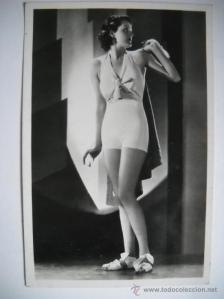 Sadly, the Weavers marriage was not to last, and they separated in 1944 and divorced in 1945. You want to know the reason? Because Kay was dating up a storm with Dan Topping, one of the infamous Topping brothers. He served in a navy capacity in Honolulu, they started socializing and the rest is history. Dan was then still married to Sonje Henie. Sonja was allegedly seeing Van Johnson (yeah, like that happened) on the side, and both wanted to get divorced – Sonja could marry Van, Dan could marry Kay.
Sadly, the Weavers marriage was not to last, and they separated in 1944 and divorced in 1945. You want to know the reason? Because Kay was dating up a storm with Dan Topping, one of the infamous Topping brothers. He served in a navy capacity in Honolulu, they started socializing and the rest is history. Dan was then still married to Sonje Henie. Sonja was allegedly seeing Van Johnson (yeah, like that happened) on the side, and both wanted to get divorced – Sonja could marry Van, Dan could marry Kay.
After some ups and down, the couple were married In Florida in March 1946 and went on to honeymoon in Clearwater, in his father’s summer home. Now something about Dan Topping (a short excerpt from Wikipedia):
Daniel Reid Topping (June 11, 1912 – May 18, 1974) was a part owner and president of the New York Yankees baseball team from 1945 to 1964. Daniel Reid Topping was the son of Rhea Reid and Henry J. Topping. Rhea Reid, the daughter of Daniel G. Reid, known as the “Tinplate King” for his vast wealth in the tin industry, was the mother of three sons, Daniel Reid Topping, Henry J. Topping (1914), and John Reid Topping (1921). Daniel Topping, along with Del Webb and Larry MacPhail, purchased the Yankees for $2.8 million from the estate of the late Jacob Ruppert on January 25, 1945. MacPhail sold his share of the team to Topping and Webb in 1947, and the two sold controlling interest in the team to CBS in 1964, after which Topping remained as team president until 1966, when he sold his remaining stake in the Yankees.
Topping also was co-owner, along with John Simms Kelly, of the National Football League‘s Brooklyn Dodgers starting in 1931, eventually owning the team outright. By the mid-1940s, Topping wished to move his football team from Ebbets Field into the newer and larger Yankee Stadium. Tim Mara, owner of the New York Giants, who played in the Polo Grounds, held NFL territorial rights, and refused to permit this. Topping moved the team anyway, joining the newly formed All-America Football Conference. Topping’s team retained most of its players during the jump and became the football New York Yankees. The team was not one of the AAFC teams admitted to the NFL in 1950, and folded.
By November the papers knew that Kay was pregnant. Their daughter Rhea was born in 1947. The Toppings lived the high life for the next couple of years, enjoying a lavish home in Park Avenue, right next to Marilyn Monroe and Joe DiMaggio.
By 1948, their marriage was in trouble. The papers were full of gossip about their the shaky marital state. In January 1949, it was reported the have allegedly reached a settlement. By February, they were reconciled. It lasted until November 1951, when they separated for good. While I don’t know the full extent of the settlement, I do know that Kay got their Palm Beach home. Some sources claim that Topping was the love of Kay’s life.
Life went on for Kay and she dated Gary Cooper in February 1952, during his Palm Beach sojourn. We all know that Cooper was a deeply unhappy man during his post Patricia Neal years, drifting from town to town, from woman to woman, and I guess Kay didn’t amount to much on his plate. The Toppings divorce was made final in June 1952, in Florida. Whatever we can say about Topping and his marriage to Kay, his love of sports rubbed of and she wanted to operate her own baseball team. She tried to buy a West Palm Beach India baseball team in 1953. Kay falls from the newspaper radar from then on, but a few bits and pieces of information could still be found.
Tragically, Kay’s son William “Billy” was killed in a freak Tiger shark attack off the Mokulua Islands, Lanikai, Oahu in 1959.
She married Frederick Moulton Agler on September 13, 1963, in Grosse Point, Michigan. Moulton was born on August 3, 1907, in . Detroit, Michigan, to Mary Eldridge Alger and Frederick Moulton Alger. Let’s just list, in short, the most important posts Frederick held in his life:
 Republican. Candidate for U.S. Representative from Michigan 14th District, 1936; served in the U.S. Navy during World War II; secretary of state of Michigan, 1947-52; Republican candidate for Governor of Michigan, 1950 (primary), 1952; U.S. Ambassador to Belgium, 1953-57.Presbyterian. Member, American Legion; Elks; Sons of the American Revolution; Veterans of Foreign Wars; Military Order of the World Wars; Freemasons.
Republican. Candidate for U.S. Representative from Michigan 14th District, 1936; served in the U.S. Navy during World War II; secretary of state of Michigan, 1947-52; Republican candidate for Governor of Michigan, 1950 (primary), 1952; U.S. Ambassador to Belgium, 1953-57.Presbyterian. Member, American Legion; Elks; Sons of the American Revolution; Veterans of Foreign Wars; Military Order of the World Wars; Freemasons.
In 1929, Frederick married Suzette de Marigny Dewey, daughter of Charles Schuveldt Dewey. The had three children: David Dewey Alger (born 1943), Marie Suzette de Marigny Alger Howard and Frederick Alger.
Kay and Frederick lived in his Grosse Point home until his death on January 5, 1967. Kay never remarried to continued to live in Grosse Point.
Katherine Alger died on May 1, 1988 in Grosse Point, Michigan.
Her former husband, Clifton Waver died on January 23, 1992.

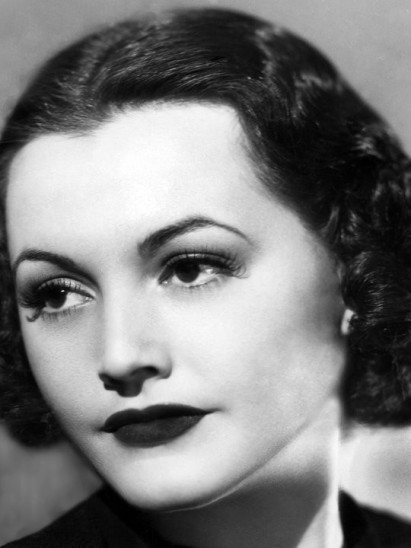
Love your blog so much. It’s amazing all the detective work you do
Thank you Martha Kethleen! It really is very interesting detective work, and very very fun! Recommended to everyone as a hobby 🙂
Aloha,
My name is Ralph. Kay is my grand mother and the mother to my mom. Cliffton Weaver is my grand father. Cliff was not a Plantation owner, that is a misnomer. He was a the owner with his brother Spence Weaver of Spence Cliff Corp. They had 40 restaurants and 2 hotels, the Pioneer Inn and the Hotel Tahiti. He built it all by pushing hot dog carts through Waikiki in the late 1930’s. After WWII they really took off.
I really like your biography of Kay. But it doesn’t tell you about how she was a loving grand mother to me and my brother Bill. She was definitely a Holly wood type and I always remember her using those long cigarette holders when she smoked. She looked the part even in her old age. She would walk into the room, and everyone would gravitate to her.
She told me she always wanted to be a normal house wife and raise a family. She didn’t like the Hollywood she had to work in. Woman were not treated well, and as you have written, it was hard to find a real man to have a family. They were all rich trust funders or dogs.
Anyways, great Bio and thanks for all the info and remembering her 🙂
Mahalo.,
RG
Hi Ralph! Nice to hear from you, and thanks a lot for the wonderful info!